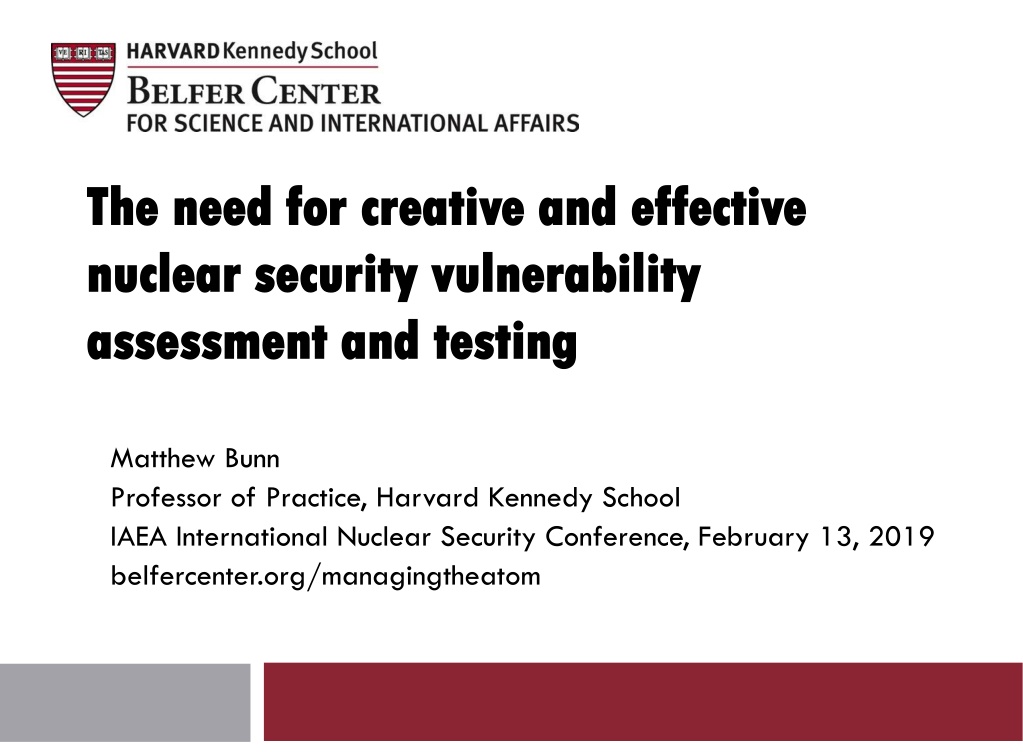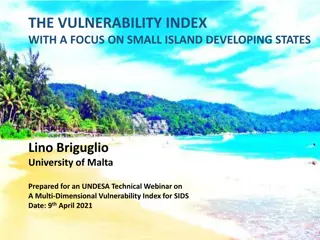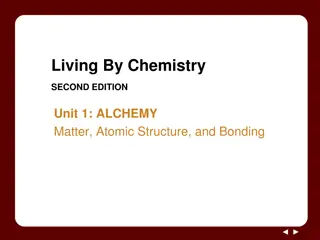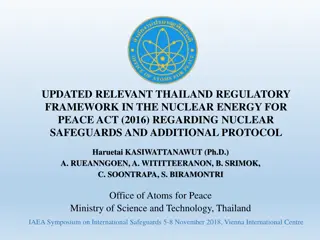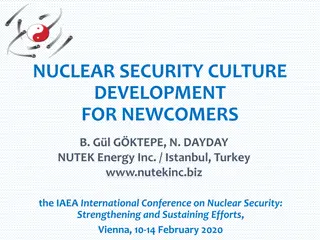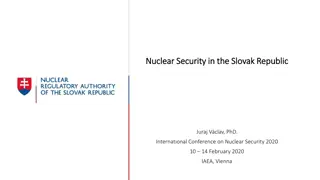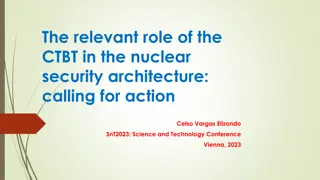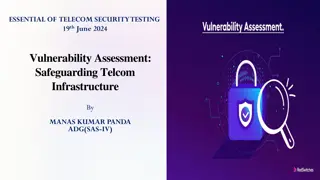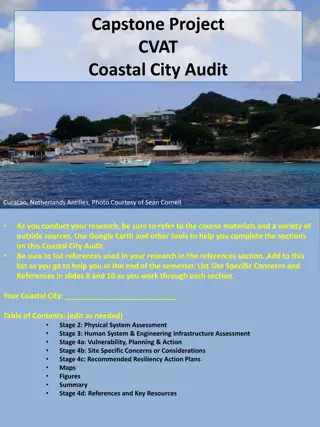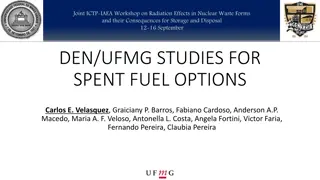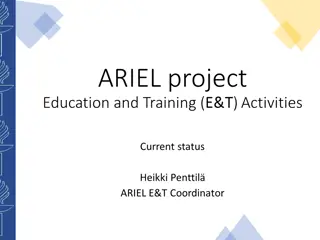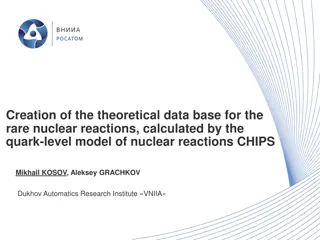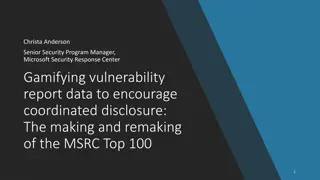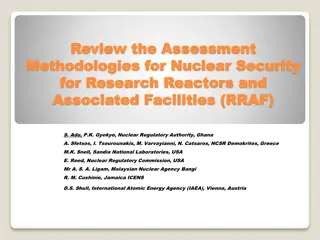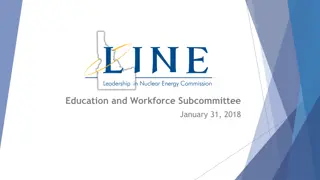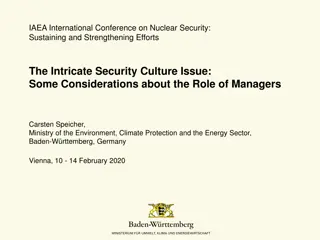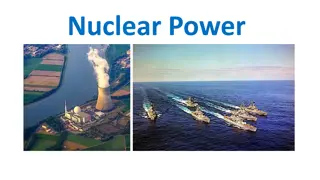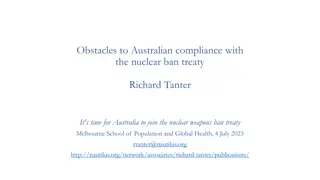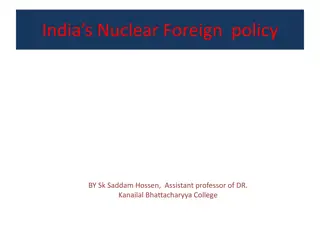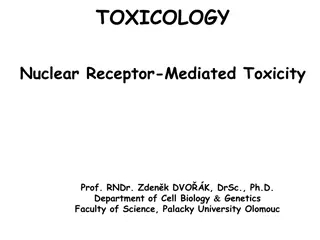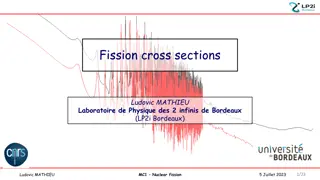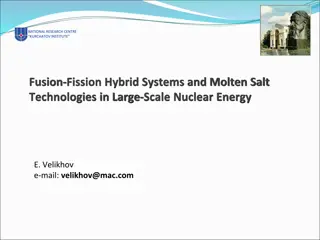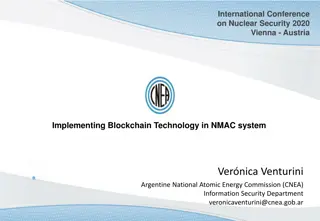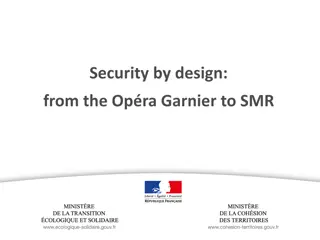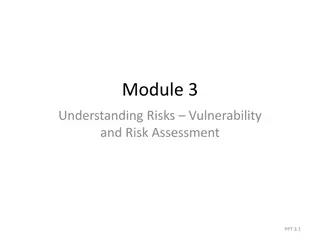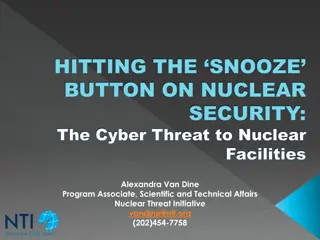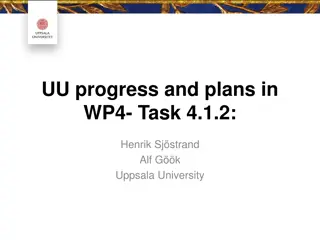Enhancing Nuclear Security Through Creative Vulnerability Assessment
Creative and effective vulnerability assessment and testing are essential in nuclear security to identify weaknesses and improve defense systems against intelligent adversaries. The need for in-depth assessment and realistic testing is emphasized to uncover vulnerabilities that adversaries may exploit. The IAEA recommends quality assurance programs and force-on-force exercises to enhance security performance. Effective vulnerability assessment requires a hacker mentality and creative approach to identify and address potential weak points, as relying on traditional methods may overlook clever adversary tactics and pose serious security risks.
Download Presentation

Please find below an Image/Link to download the presentation.
The content on the website is provided AS IS for your information and personal use only. It may not be sold, licensed, or shared on other websites without obtaining consent from the author. Download presentation by click this link. If you encounter any issues during the download, it is possible that the publisher has removed the file from their server.
E N D
Presentation Transcript
The need for creative and effective The need for creative and effective nuclear security vulnerability nuclear security vulnerability assessment and testing assessment and testing Matthew Bunn Professor of Practice, Harvard Kennedy School IAEA International Nuclear Security Conference, February 13, 2019 belfercenter.org/managingtheatom
Intelligent adversaries can sometimes beat even impressive-seeming security systems 2 Understanding the real performance of security systems is difficult Adversaries may think of ways to defeat the system defenders didn t imagine Often the case in non-nuclear thefts and attacks U.S. experience: Compliance with rules is not enough Assessment of ability to defend against a few basic adversary paths is not enough Creative teams with a hacker mentality often find vulnerabilities Both in-depth vulnerability assessment and realistic testing are needed Source: U.S. DOD
The IAEA recommends assessment and testing of nuclear security systems INFCIRC 225/Rev. 5 calls for operators to have quality assurance programs to ensure that security systems provide the required level of protection Inevitably includes in-depth assessment of potential vulnerabilities INFCIRC 225/Rev. 5 also calls specifically for exercises to test security performance, at least annually Many countries are not yet implementing such force-on-force exercises Because these steps are included in IAEA recommendations, they are included in the commitments of the Strengthening Nuclear Security Implementation Initiative (INFCIRC/869), for states participating Recently published (2018) guidance on force-on-force excercises (IAEA-TDL-008); WINS also offers guidance
Effective vulnerability assessment requires a creative search for weak points Need to assign teams with a creative, hacker mentality to try to think like the adversary, try to find plausible ways to defeat the system Teams should also offer suggestions for fixes Teams need backing from organization s leadership Need to avoid ostracizing people who point out vulnerabilities Assessing a few obvious pathways is not enough to understand real performance against clever adversaries A vulnerability assessment that finds no vulnerabilities is almost certainly wrong
Challenges to vulnerability assessment 5 Large unknowns about adversary capabilities and tactics, guard force behavior, and more Can only model what we can think of Attackers may think of something else High complexity, unexpected effects Behavior of humans in the system difficult to predict Insider threats difficult to model, assess What you see is all there is models may lead us to ignore the things left out of the model ?
The need for realistic performance testing Testing is a crucial supplement to vulnerability assessment Many types of testing are helpful, have their own pros and cons Tabletop exercises Limited-scope testing of particular security elements Full-scale force-on-force exercises Realistic force-on-force exercises red team outsiders attempting to break in, red team insiders attempting to smuggle items out or commit sabotage can: Reveal vulnerabilities that require correction Convince higher-ups that more investment in security is in fact needed Provide training for, increase security awareness of, guards and other security personnel Many, many issues cost, inconvenience, realism, cheating, who tests, how often, etc. but clearly better than not conducting such exercises
Challenges of testing insider threats 7 Insiders have months or years to observe security practices, develop plans to defeat them Potentially far more than the effort that will be put into a plan for a test Difficult to test full suite of potential insider actions while maintaining safety, security Key insider protections such as high employee morale, effective reporting systems are difficult to model or test Cognitive, organizational biases tend to blind organizations to insider threats http://www.belfercenter.org/ publication/insider-threats
For further reading Matthew Bunn, Modeling of Nuclear Security: Use the Tool, But Remember Its Limits (Cambridge Mass.: Project on Managing the Atom, Harvard University, August 2019). https://scholar.harvard.edu/files/matthew_bunn/files/modeling_of_nuclear _security_use_the_tool_but_remember_its_limits_3_0.pdf Matthew Bunn, Nicholas Roth, and William H. Tobey, Revitalizing Nuclear Security in an Era of Uncertainty (Cambridge, Mass.: Project on Managing the Atom, Harvard University, January 2019). https://scholar.harvard.edu/files/matthew_bunn/files/bunn_revitalizing_nuc lear_security_in_an_era_of_uncertainty_2019.pdf
